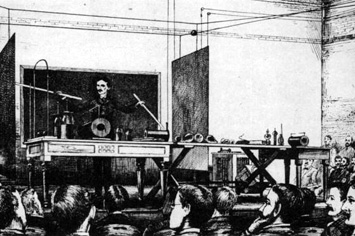A working document–version 0.2, Dec 12 2011
Design is everywhere nowadays. Every nation–or even some cities–runs design organization of some sort, and there are ever-more design awards, festivals, and fairs around the world. Now there is even such an initiative as World Design Capital from 2008, and funnily enough, the city I used to live was appointed in 2010, and so is where I now reside for 2012. It is safe to say there is all but design epidemic in the world. I am afraid, however, there are more people who are lured to use this illusive – if not embezzling – term without fully recognizing what it means than ones who choose to use it because they mean it. As there is no unified definition of design, and therefore design seems to mean everything and nothing: looks, shapes and colors of products; user interfaces whether graphical or physical; architectural blueprints; engineering drawing; CSS codes, business process; corporate identities; circuit diagrams and sewing patterns; you name it. Why is that so? It may be that the history of design is not as long as that of architecture, or that design actually is such a versatile term. Nonetheless, if we still want to understand what it means to design, one way is to start contracting what stand out against design from design, such as craft.
The Industrial Revolution began in the United Kingdom, then subsequently spread throughout Europe, North America, and eventually the world, and changed everything. Mass production: we’ve become able to produce goods that existed for long–like textile and plates–in ever-larger quantity with new means of production such steam engine and factories, and further, towns built around the manufacturing efficiency, introduction of primary education, and concentrated capital. The industry faced problems and required people with a new job description–whether or not they were called designers–who understand the limits of existing technology, who can make a plan for more desirable while still reasonably affordable goods. Designers from the very beginning have had at least three axes to juggle: feasibility, viability, and desirability1. The most beautiful textile pattern is of no use if either it is not feasible with current technology or it takes so long to produce that not profitable. No the cheapest or the most useful product will sell if it is monstrous hence nobody wants it.

By the beginning of 20th century design faced a new sets of problems: how to give shapes to products that never existed before. Toaster, radio, TV, washing machine were newly introduced and to be designed interesting, desirable, affordable, easy, and safe. Before and after World Wars new machinery coined ergonomics studies, which design had to embrace to solve new problems. From 1940’s more advanced corporations began to realize the importance of, and to compete with brand propositions, where design has faced new challenges such as how to develop, keep, and communicate the integrity of a brand. From the 60’s some nations aware of brand proposition started developing national brand to support its national produce and tourism, and now there are cities trying to achieve the same goal at city level. Over time, design has evolved embracing anything required–usability, material science, cognitive science, ergonomics, ethnography, you name it–to solve the problems before us.

Long story short, the reason we may be confused about what one means by ‘design’ is because design has been evolving while expanding its notion ever since the Industrial Revolution to creatively solve newly faced problems within the given restriction or–more positively–design drivers. Now, scrape away the seemingly deserved “look and feel” aspect of design from designing. What’s left is creative, yet restless endeavor and effort to solve problems before us.
Design was about giving identities to patterns and colors on plates or textile in the beginning of the Industrial Revolution, and still is nowadays on mobile phone covers and laptop pouches. Design was and is about giving identities to forms of products we sit on, talk through, turn on, wash with and listen to. Design has become about giving identities to brands, cities, and nations, and now design is about giving patterns, forms, identities, to a system within which how the entities of the whole work with one another. Ultimately, design is a creative, problem solving discipline whether or not each individual project deals with aesthetics.
Today, design is facing new sets of challenges in ever more integrated manner and ever greater context where we start talking about experience design, service design, strategic design and more: how to design a phone that makes the most of an operating system, a huge backbone system, and business platform, and even coherent user experience across devices of diverse size and use; how to design a pathway to formal economy for the disenfranchised poor, and how to design a way we work better together and understand the architecture of problems, all of which are all the more systemic and complex.
–
1. Brown, T. (2009) Change by Design, How Design Thinking Transforms Organizations and Inspires Innovation, New York: Harper Business.
Leave a Reply